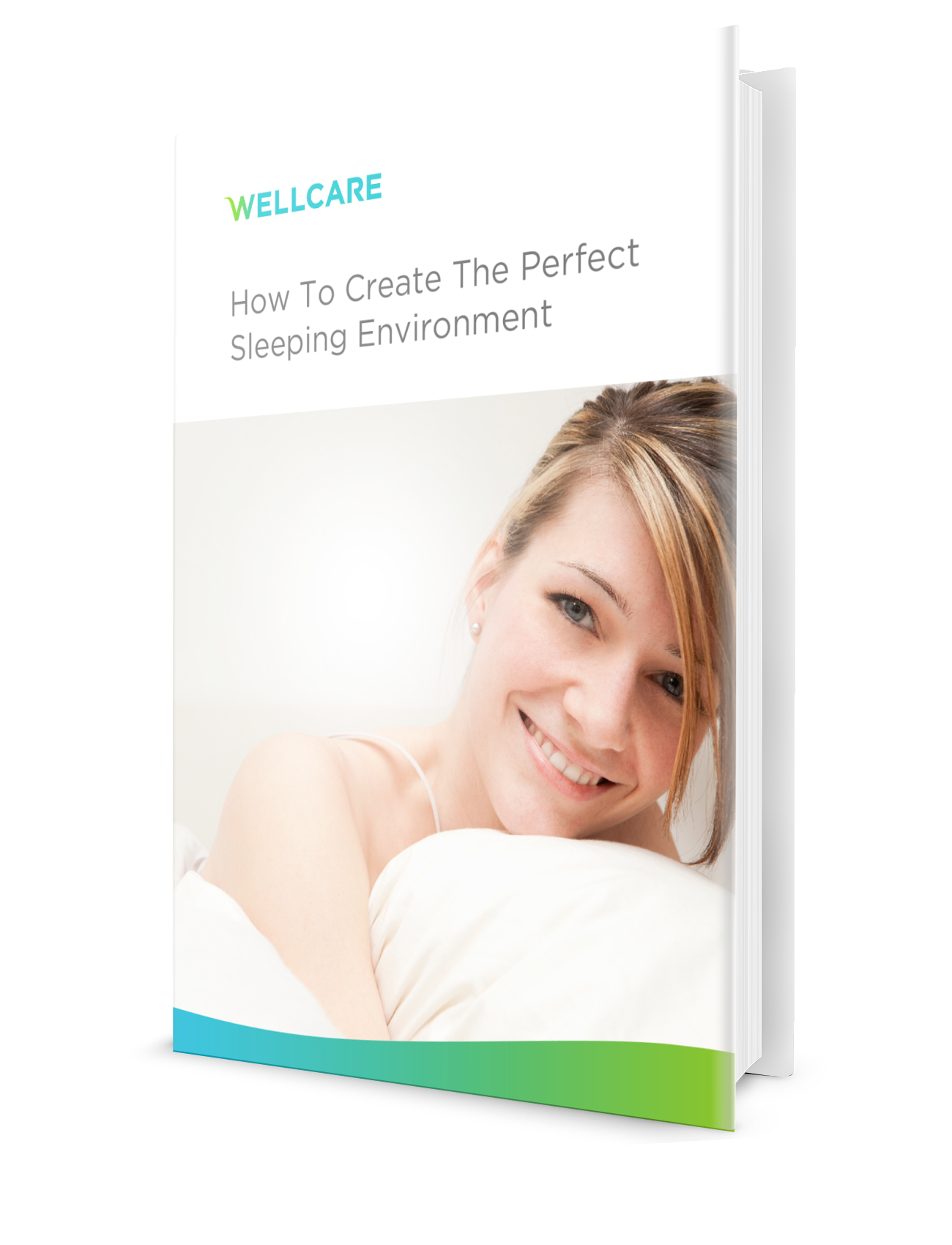
Most of the electric blanket articles found online primarily centers around the U.S. market, there are a lot fewer electric blanket articles that focuses on the EU market. This article is written for the electric blanket consumers living in Europe. The goal is this article is to provide information about electric blanket safety as well as how to choose the perfect electric blanket for your loved ones.If you have any suggestions about this topic, feel free to leave us a message under the comment section below!

Widely considered the father of modern medicine, Hippocrates believed that weather could be used to predict health and illness to a significant degree. Hot, moist summers often lead to fever and dysentery, for instance, while a cold springtime would likely see more strokes among the elderly.
Medicine has evolved a lot since Hippocrates’s time, but the influence of weather and temperature on the body remains a major concern in healthcare. Life expectancies have increased to as much as 82 and 76 years for women and men, respectively, in developed countries, but even there, weather- and climate-related deaths are still a major issue—as can be seen in excess winter deaths, which have been climbing over the years. In the winter of 2016-17, among those aged 65 and above, there were 31,800 deaths from cold-related illnesses (up from 20,800 the year before).
Keeping warm may seem like a basic survival instinct, but it’s something that humans have been improving on over the years. Humans have come up with several ways to keep warm, ranging from clothes to architecture to heating devices—including one especially effective device, the electric blanket.
In the article that follows, we’ll be discussing:
1. How cold exposure affects the human body
It’s no secret that keeping warm is important. Intense chills can lead to a lot of evocatively named health conditions: frostnip, frostbite and, of course, the “common cold.” But these aren’t the only dangers posed by cold weather and low temperatures.
Being cold affects the body in several ways, many of which are not readily apparent. In order to understand why it’s important to keep warm—and how best to do that—you should know what exactly happens to your body when it’s subjected to extreme or prolonged cold.
Simply put, cold temperature places physiological stress on the body in a number of ways. It slows metabolism, alters blood circulation, and can affect muscles and joints. Because cold weather restricts our activities and lifestyles, prolonged cold weather can also have several indirect effects on your health.
It should be noted that questions about the effects of coldness on the body are difficult to answer definitively. There are several factors constantly at work on the human body and it can be difficult to isolate one cause from another. That said, doctors and scientists have, over the years, managed to identify a few links between temperature, health, and the human body. And while the exact findings might change with further research, there are some things we can state with reasonable certainty.
Metabolism
Some of the most basic effects of exposing your body to cold have to do with metabolism, the ways in which your body manages provides itself with energy for vital processes.
In terms of direct effects, you’d be right to say that exposure to cold burns calories. Scientists from Maastricht University in the Netherlands conducted an experiment to see if exposure to low temperatures had an effect on metabolism. The inspiration for their experiment was fairly simple: shivering causes an increase in energy use but is quite uncomfortable; could exposure to moderate cold have a similar, if milder response?
In short, yes. In their experiment, they found that most young and middle-aged people spent 30% more energy on
regulating their body temperature when exposed to moderate cold, which they set at around 18°C.
While cold exposure is a good thing in moderation, it can be harmful when taken too far. Extreme cold exposure can
rapidly deplete a body’s store of energy, leaving it vulnerable to various complications.
Circulatory System
Cold weather can put a lot of strain on your circulatory system. When you are cold, your body reduces circulation to the extremities and skin surface, the parts of your body most exposed to cold. Instead, it concentrates blood deeper in your body, especially around your internal organs. This keeps blood warmer and also ensures that your vital organs get all the heat and oxygen they need.
This process, however, leaves less room for blood to move around in your circulatory system. It leads to a significant
increase in blood pressure, which is tied to more incidences of heart attacks and strokes. These two complications peak during the winter month and are responsible for a large share of excess winter deaths.
Muscles and Joints
Scientists have had difficulty gauging the effects of cold exposure on muscles and joints because of the many other factors constantly at play. Muscles and joints respond differently to combined changes in temperature, air pressure, and humidity (which also tend to affect each other).
For example, osteoarthritis and fibromyalgia both worsen in cold weather, but the former is also aggravated by high humidity; the latter, by high atmospheric pressure.
One overall effect, however, is a consequence of the effect of cold exposure on blood circulation. Because the oxygen in the bloodstream becomes more scarce, especially in the limbs, it becomes more difficult to move your muscles. This can lead to reduced strength and mobility, as well as muscle aches.
While cold weather is, and always has been a threat, there are some factors that can make it worse. Some of these are individual traits that leave people more susceptible, while others are environmental factors that put entire societies at risk.
By identifying these factors, people can better respond to the health risks of cold exposure, whether this involves personal habits or community-based responses.
Age
Cold temperatures place physiological stresses on the body, so when you’re in good physical condition, you can respond better to cold exposure. Conversely, people who are less physically fit don’t adapt well—this includes children and the elderly.
Children are more susceptible to cold stress because they have less body mass, which means they lose heat faster. While they’re less likely to report feeling cold, this is usually because they’re more active and generate more heat. But when they’re out of energy, children are much less capable of regulating body temperature.
Older people are also less capable of adapting to low temperatures. In addition to being less fit, the elderly are especially susceptible to to respiratory problems and heart diseases.
Cold temperatures can be very dangerous to older people’s health, as they not only increase the likelihood and severity of flu and respiratory problems, but being cold also thickens the blood and increases blood pressure, which increases the risk of heart attacks and strokes. As mentioned earlier, a large portion of excess winter deaths are the result of heart problems among the elderly.
Climate
Changes in the global climate are poised to subject people across the world to warmer temperatures in general as well as more frequent extreme weather events. Those particularly at risk of cold-related death, however, are those in warm climates.
Why? The reason is that communities are more used to dealing with extremes of climates they’re already used to. So people who live in cooler climes can deal with extreme cold better than extreme heat, and vice versa. This is caused by both biological acclimation (bodies being conditioned to the climate) as well as community responses (having measures in place to deal with certain types of weather).
While acclimation can be difficult, community responses may be improved. This would come with significant costs, of course, but more economical solutions may be discovered in time.
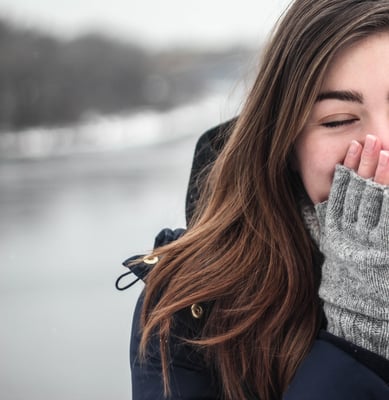
There are two general approaches to keeping warm: first is keeping the environment warmer; second is keeping warm on the individual level. Within each of these approaches are different methods, each suited to different situations.
When it comes to choosing one of these methods, your primary concern should, of course, be maintaining your body’s health. A central heater makes the entire room warm, yet, the decrease in room humidity might make us uncomfortable. Even with a heater turned on, your bed will still be cold and this will directly affect your sleep quality.
Central heaters also uses a lot more energy, therefore, they are less environmental friendly. A good way to save energy is to still use the central heating system, but lower the temperature to around 18 degrees celsius. This is the perfect room temperature for sleep and you can make your bed warm and comfortable with the use of an electric underblanket.
The Body's Temperature at a Glance
To choose the best way to keep warm, you have to understand how the body regulates its own temperature. The best ways to protecting yourself from cold exposure involve complementing your own natural temperature regulation.
Activity
Physical exertion gets your blood flowing, which in turn raises your body’s temperature. As mentioned earlier, though, this means that you’ll tire yourself out faster. So while physical exertion can keep people warm, especially in the outdoors, it’s not viable for all situations. Moreover, it’s important to find a mild environment to rest afterward. If you end up sweating from the exertion, you’re especially vulnerable to the cold.
Sweating and Shivering
Sweating and shivering are your body’s automatic (involuntary) responses to heat and cold, respectively. While your body will resort to these by necessity, you should do what yo ucan to not have to rely on them. Sweating can leave you dehydrated if left unchecked. Shivering hampers your movements and will tire you out eventually. Do what you can to keep from getting to the point where these are needed.
Daily Cycles
Your body temperature goes through natural highs and lows throughout the day. Your temperature will generally be higher during the day. The specific high points depend on when you’re most physically active. Meanwhile, your body temperature drops when your body is preparing for sleep. This is triggered by your circadian rhythm—your “body clock,” if you will—so for example, even if you’re pulling an all-nighter, your body starts to cool at the time you’d normally be asleep.
When your body temperature drops in preparation of sleep, you become especially vulnerable to cold exposure. Obviously, you can’t warm yourself up with physical exertion while you’re asleep, so blankets and warm clothing are especially important during this time.
Warming the Hearth
Keeping your environment warm is many people’s preferred option when they can manage it. After all, when your home is warm and cozy, there’s no need to bother with layers of bulky clothes, heavy boots, or gloves that leave you fumbling with your fingers.
Of course, there are some drawbacks. Heating a room (or several) either involves spending on power or investing in new furnishings; sometimes both. Fully outfitting a room requires a higher budget to carry out.
Space Heaters
Centralized heating is, of course, the most comprehensive way to warm an indoor space. For most personal uses, however, it can be excessive. Space heaters, which are built with a variety of sizes and heating methods, are more cost-effective for heating individual rooms.
Space heaters can be a fire hazard, though. An article from Merseyside fire and rescue service in United Kingdom shows in 1997, there were 4195 incidents, causing 47 deaths and 820 non-fatal injuries. The risk of fatality is high at 11 per 1,000 incidents and the risk of injury is 195 per 1,000 incidents. When you use a space heater to keep your home warm, you should be extra careful.
Room Dressing
If you can dress your body for warmth, you can do the same for your room. By covering up the places where heat escapes (windows, doors, etc.) you can keep the warmth in-house. Think heavy curtains and something to cover up the gap under your door—pool noodles or rugs should do the trick; just move them out of the way when you need to use the door.
The downside to this is that you can only hold onto the heat that’s already there. If the room’s too cold to begin with, this won’t do much good.
Keeping one body warm is usually easier than warming up an entire room, so these options are good for nearly any situation.
Covering Up
Remember how the body redirects blood flow away from your extremities when you’re cold? Those parts of your body have a lot of surface area compared to mass, which means they lose heat faster. But this also means that covering them up stops you from losing a lot of heat. This is why gloves, scarves, and earmuffs can have a big effect even if they don’t seem to cover much. Hats work like this too, which is especially useful if your head is sensitive to cold.
That said, your body prioritizes your core for a reason: it’s where your vital organs are. Even as you cover up your extremities, remember to keep your torso properly insulated, too.
Heat Pads
When you’re not on the move, you can also keep warm by targeting specific body parts using heat pads. They’re especially effective for heat therapy: relieving discomfort in muscles or joints using targeted heat.
Depending on the sort you get, heat pads might get their heat from hot water, from other heat sources, or from an internal mechanism. Whichever it is, they’re energy-efficient and effective. The main downside is that they can’t keep your whole body warm.

As we mentioned earlier, you’re especially vulnerable to cold exposure when you go to sleep. This is why we have items designed to keep us warm at night, such as blankets and certain linens.
The most effective item in this category is the electric blanket. Electric blankets use both insulation and heat generation to provide warmth and comfort while remaining energy-efficient. The latest electric blankets use the same basic principles as the first ones did, but have been refined to be even better at what they do.
The basic principle of electric blankets is an electric current passing through a resistive wire generates heat. Most of the mainstream electric bedding contains a long length of resistive wire heating element fastened in a serpentine pattern throughout the pad or blanket. Because blankets insulate by design, the heat remains trapped inside, where the user is.
Of course, to maintain comfort, safety, and even heating throughout, there are a few more design principles at work. Manufacturers use various materials and mechanisms to incorporate other features like overheat protection, variable heat output, auto-shutoff, and more. These things improve ease of use, comfort, and safety, among other things.
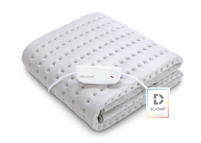
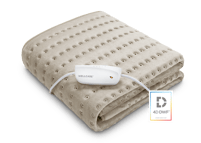
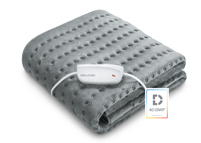
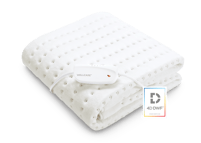
Types of Electric Blankets
There are two types of electric blankets: overblankets and underblankets. It may come as a surprise that there exist two types, partly because not all manufacturers or stores use these terms.
Overblankets are often simply called blankets and when people think “electric blanket,” they usually think of these. They go over the body and so, just like conventional blankets, they keep heat—both body heat and the heat they generate—from escaping upward and outward. However, because electric blankets are exposed on one side, that means some of the heat they generate is lost.
The less-known underblanket, meanwhile, is sometimes called the heated mattress pad or electric fitted sheet. As those names imply, this type has a fitted skirt that clings to the mattress, holding it in place between you and your bed. These types are overlooked enough that some people think it a lifehack to slip your electric overblanket under a fitted sheet. There’s actually no need for that here, as underblankets are designed to lay right under your bed sheet.
Underblankets provide their heat from below. Because of this, all the heat of an underblanket remains trapped: below, by the mattress; on top, by your blanket or duvet You get more heat retention with an underblanket. However, the way they are positioned means they don’t work with unconventional mattresses—if you use a futon, sofabed, or something similar, you may not be able to use an underblanket.
4D Temperature Technology
One notable feature among the latest electric blankets is 4D Temperature Technology. Unlike ordinary flexible heating products that are only warm when your skin is in direct contact with them, products with 4D temperature technology can deliver warmth more efficiently to create comfortable temperature around you.
By using specially designed 4D circular holes, heat circulates within every 4 holes to form an independent matrix, greatly increases the fabric breathability. Each independent matrix is then connected to one another so warmth is retained effectively. As heat release from the circular holes, it combines with humid cold air, forming a comfortable warmth flow.
The result is a product that provides better warmth, comfort, and breathability.
Features
Although manufacturers try to set themselves apart, there are a few features you can be sure electric blankets will possess. These distinguish them from other heating products and guarantee the benefits you get from using them.
Energy Efficency
Electric blankets don’t use much electricity, making them a great alternative to keeping your heater on through the night. Every electric blanket has a different wattage, and the higher it is, the more it costs to run. In general, though, electric blankets are not expensive to run. The price to run an electric blanket ranges from around 50 cents to about £1 a week, which is a lot cheaper compared to what you’ll pay if you just used your central heating system.
With the use of an electric underblanket, even when it becomes too cold during winter, you can still turn down your central heating a few degrees. Over time, you’ll notice a significant decrease in your energy consumption.
Durability
A first-rate electric blanket is a worthwhile investment. It’s expensive on the outset, but it’s more cost-effective in the long run because you won’t have to worry about buying a new one any time soon. High-quality electric blankets last for several years when cleaned and stored properly.
Safety
Electric blankets made by reputable manufacturers go through rigorous testing to ensure they’re safe for use. A well-made blanket heats evenly and can be set to shut off after a certain amount of time, minimizing the risk of injuries, fires, or electrical damage.
There are several certifying bodies for electric blanket safety, which we talk more about in the next section.
Comfort
Comfort is a major concern in electric blanket design. After all, they’re meant for use while sleeping—any form of discomfort would get in the way. Electric blankets are made in a variety of materials and with the capacity for different temperatures. This ensures that you can find a model that suits your preferences.
On top of that, electric blankets can help in regulating humidity. Because of the way they warm the air, electric blankets can reduce humidity in the area they cover (i.e. underneath an overblanket or between underblanket and duvet). Leaving an underblanket running for a few hours each day can even reduce the presence of dust mites. When reducing dust mites, your electric blanket temperature needs to surpass 60 degrees and you should turn it on for more than 1 hour.
Overblanket or Underblanket
Choose a type of electric blanket based on how you plan to use it and the type of bed you’ll use it with.
In most cases, you’d use an electric blanket to keep warm while in bed during the night. In this case, electric underblanket would be an ideal choice. In fact, underblankets have a higher demand than overblankets in European countries.
But if your mattress isn’t compatible with an underblanket (e.g. non-standard size or unconventional type of mattress/bed) an overblanket would work better. Some manufacturers advise against using electric underblankets with memory foam, too.
Most of the information you find will recommend NOT to use an electric blanket with a memory foam mattress. The reason is different materials are used for different types of memory foam mattresses, we are not sure if these materials can constantly stand high temperature. The heat might cause damage to your memory foam too.
Memory foam becomes softer as it detects heat from human body. It is possible that the electric underblankets sinks down as the temperature becomes hotter, causing the blanket to bend and overheat.
If you still want to use an electric underblanket with a memory foam mattress, you should use a lower temperature setting and limit the time to 30 minutes.
Safety
Aside from costs, safety should be one of your major concerns when buying an electric blanket. Try not to buy to cheaply priced electric blankets. Yes, they’re affordable, but they’re usually made of lower quality fabrics and not manufactured under strict safety guidelines. Invest in high-quality electric blankets instead. By purchasing a higher quality electric blanket, you are making a good investment on product safety as well as better sleep quality!
You can be assured your blanket or pad is safe if it is marked as complying with EN60335-2-17, EN60335 and UL 964, which is the KEMA-KEUR, ENEC05, CE and Underwriters Laboratories’ safety standard for these devices and it is used properly. See the specific instructions that come with all UL conforming automatic bedding sold in the USA.
You can confirm that the electric blanket has passed European safety regulations by looking for the following certifications on the product’s label:
Electric blankets are made using a wide variety of fabrics such as cotton, polyester, and fleece. What you choose depends largely on you. Just make sure you buy the one that is most comfortable for you to sleep in. Buying one that you don’t find comfortable defeats the purpose of getting an electric blanket.
It is advisable to invest on electric blankets with the best quality. They’re usually made of high-quality fabric and are manufactured under strict safety guidelines. Your health and safety should be your priority when purchasing an electric blanket since it directly affects the quality of your sleep and keep you away from danger.
Different brands of electric blanket have different ranges of temperatures, some gets a little hotter than others. You just have to decide what range of temperatures you find most comfortable for your body.
Keep in mind that hotter does not mean better. Ultra-high temperatures, if not properly regulated, can burn your skin and easily lead to overheating. Again, always refer to safety standards.
An electric blanket with a timer and controller makes it easy for you to adjust the temperature to your liking and set the time for when it shuts off. That way, you avoid consuming too much electricity as well as overheating the blanket. For added convenience, find an electric blanket with an easy-to-understand, detachable controller.
Manufacturing electric blankets and heating pads is far from comfortable. As a product worth both technical and industry standards, making sure that a company that creates them is up to the task.
These are some criteria you can use to evaluate an electric blanket brand:
You also need to ensure that you get a newer model electric blanket, as they have automatic shutoff features to avoid overheating and therefore prevent a potential fire from occurring. Older model electric blankets (made prior to 2001) don’t have this feature, which makes overheating is such a real possibility.
In the UK, it’s estimated that about 5,000 fires a year are caused by electric blankets, with a majority due to old or faulty products. This is why it’s important to replace your old electric blankets with new ones. Depending on usage, most electric blankets can be used for several years, it is important to do a checkup before using them each year. Don’t use them anymore if it's not functioning properly because they pose a serious safety risk.

Getting the most out of your electric blanket—whether in terms of efficacy, comfort, or longevity—requires that you use it properly.
Here are a few quick tips for using an electric blanket:
Caring for an electric blanket also involves proper storage and cleaning, which are detailed below.
Storage
Under no circumstances should you fold your electric blanket when it’s not in use. Doing so can damage the product’s internal wiring. Rather, let it cool fully before folding or storing it. To store an electric blanket, you can either roll a blanket or hang it neatly.
If you use your electric blanket every night, you can just unplug it and leave it flat on your bed. Don’t place heavy items on top of your electric blanket, as the added pressure can also cause wire damage.
Cleaning
Most modern electric blankets are washable and can be dried using a machine dryer. To avoid ruining your electric blanket in the wash, you need to take certain precautions such as:
Used properly, electric blankets can provide several benefits: good health, sustainable lifestyles, and better sleep . That last one shouldn’t be underestimated—good sleeping habits can reduce the risk of serious disease, sharpen your thinking, and improve your mood.
While there are many myths about electric blankets and safety risks, you need not worry. Because several institutes include among their functions the evaluation of electric blanket safety standards, all reputable manufacturers have products that are completely safe for home use.
All told, electric blankets represent a simple but significant step forward in improving our health and overall quality of life. Their simplicity of design and accessibility are also a statement in terms of technology: that these improvements should be available to all.
In an age of rapid cultural and societal shifts, it can be easy to overlook simple solutions. But there’s no need to complicate things—if you want to sleep better at night, literally and figuratively, an electric blanket is the thing for you.
Wellcare is dedicated to providing high-quality electric blankets that promote good sleep and better health. If you want to know more, visit our blog or contact us.
"How to create the perfect sleeping environment"
Not being able to sleep well has become a big problem for everyone in the world. Nowadays, we all experiencing much more mental stress and that is making us hard to relax.
Are you looking for ways to get a better night of sleep? Building a comfortable environment is crucial to falling asleep and rest well.
Would you like to sleep better and gain more energy the next day? If so, this "How to create the perfect sleeping environment" Ebook is perfect for you.
